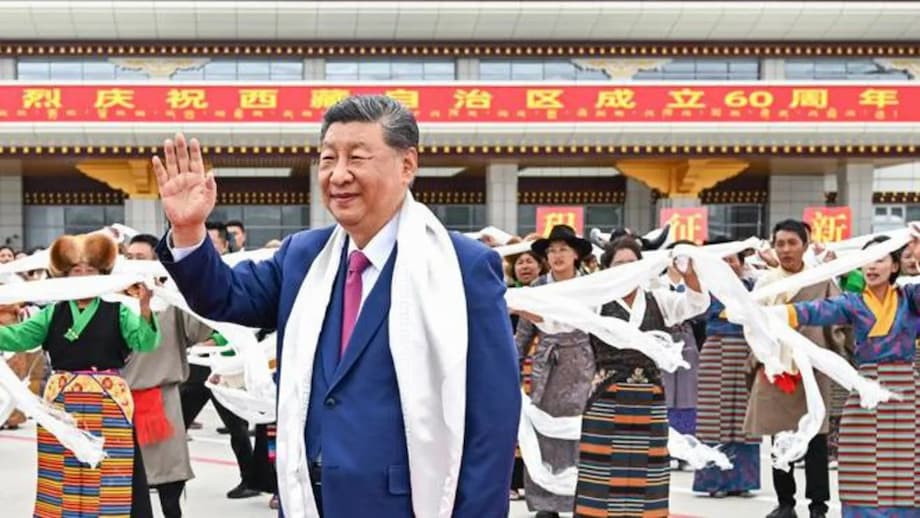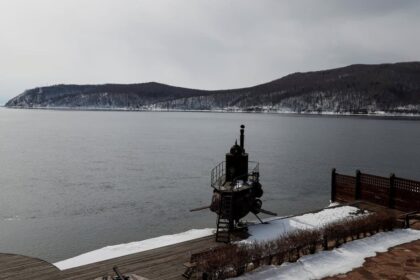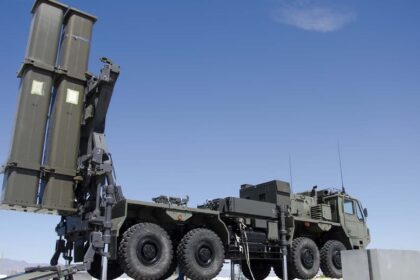Xi Jinping’s Visit to Tibet: A Show of Power and a Message to the World
Chinese President Xi Jinping made a rare and highly symbolic visit to Tibet’s capital, Lhasa, on August 21, 2025, marking the 60th anniversary of the founding of the Tibet Autonomous Region. The event drew a crowd of 20,000, including local officials, military personnel, schoolchildren, and Tibetans in traditional dress, all gathered beneath a towering portrait of Xi. This was only Xi’s second trip to Tibet as president, underscoring the political significance of the journey and the message Beijing aimed to send both domestically and internationally.
- Xi Jinping’s Visit to Tibet: A Show of Power and a Message to the World
- Why Tibet Matters: History, Identity, and Geopolitics
- Xi Jinping’s Message: Unity, Stability, and the “Sinicization” of Tibetan Buddhism
- The Dalai Lama Succession: A Brewing Confrontation
- Development, Infrastructure, and Environmental Concerns
- Human Rights, Cultural Survival, and the Limits of Control
- In Summary
Xi’s visit comes at a time of heightened tension over the future of Tibetan Buddhism and the looming question of who will succeed the 14th Dalai Lama, now 90 years old and living in exile in India. The Chinese government’s insistence on controlling the succession process has set the stage for a potential confrontation with Tibetan religious authorities and the global Tibetan diaspora. The visit also coincides with major infrastructure projects in the region, including the construction of what will be the world’s largest hydropower dam, further highlighting Tibet’s strategic importance to China.
Why Tibet Matters: History, Identity, and Geopolitics
Tibet, a vast and high-altitude region on China’s western frontier, has long been a flashpoint for issues of national identity, religious freedom, and geopolitical rivalry. While Beijing claims Tibet has been part of China for centuries, many Tibetans maintain that they were essentially independent for most of that time, governed by a Buddhist theocracy centered on the Dalai Lama.
Communist forces occupied Tibet in 1951, and after a failed uprising in 1959, the Dalai Lama fled to India, where he established a government-in-exile. In 1965, China formally established the Tibet Autonomous Region, promising ethnic minorities greater autonomy. In practice, however, decades of political repression, cultural assimilation, and economic transformation have followed. The region remains largely closed to foreign journalists and visitors, and its border with India is a source of ongoing military tension.
For Beijing, Tibet is not only a matter of territorial integrity but also a strategic asset. The region borders India, contains vast natural resources, and is the source of major rivers that flow into South and Southeast Asia. Recent years have seen large-scale migration of Han Chinese into Tibet, the construction of military and civilian infrastructure, and the launch of mega-projects like the Motuo Hydropower Station on the Yarlung Tsangpo river. These moves have raised concerns in neighboring countries, particularly India and Bangladesh, about water security and regional stability.
Xi Jinping’s Message: Unity, Stability, and the “Sinicization” of Tibetan Buddhism
During his visit, Xi Jinping delivered a speech to senior Tibetan officials emphasizing four priorities for the region: political stability, social stability, ethnic unity, and religious harmony. He praised local authorities for their “thorough struggle against separatism”—a reference to decades of Tibetan resistance to Chinese rule—and called for the continued adaptation of Tibetan Buddhism to socialist society.
Xi’s remarks were carefully crafted to reinforce the Communist Party’s narrative of progress and unity. He called for the building of a “modern socialist Tibet that is united, prosperous, civilized, harmonious, and beautiful,” and urged the popularization of Mandarin Chinese and the integration of Tibet with the rest of the country. Notably, he did not mention the Dalai Lama by name, but his comments on religious affairs were widely interpreted as a veiled message to the exiled spiritual leader and his followers.
Sinicization of Religion: What Does It Mean?
Since coming to power, Xi has promoted the “sinicization” of all religions in China, meaning that religious practices and institutions must adapt to the values and policies of the Communist Party. In Tibet, this has meant tighter regulation of monasteries, increased surveillance of monks and nuns, and efforts to guide Tibetan Buddhism to align with socialist values. Policies have included sending Tibetan children to state-run boarding schools where Mandarin is the primary language of instruction, and restricting religious activities not sanctioned by the state.
According to rights groups and Tibetan exiles, these measures amount to an erosion of Tibetan cultural and religious identity. Monks in Sichuan province, for example, have reported ongoing oppression and persecution, while Beijing insists that its policies have improved living standards and brought stability to one of China’s poorest regions.
The Dalai Lama Succession: A Brewing Confrontation
The question of who will succeed the Dalai Lama is at the heart of the current tensions between Beijing and the Tibetan community. Tibetan Buddhists believe that the Dalai Lama is reincarnated in a new body after his death, a process traditionally overseen by senior monks and the Dalai Lama’s own office. However, China’s officially atheist Communist Party insists that it alone has the authority to approve the next Dalai Lama, setting the stage for a possible split between a Dalai Lama chosen by Tibetan religious authorities and one appointed by Beijing.
Just two months before Xi’s visit, the Dalai Lama reiterated that his office—not China—would select his successor, and that the process would take place outside Chinese control. In a memoir published earlier this year, he stated that his reincarnation would be born “in the free world outside China,” urging his followers to reject any candidate selected by Beijing. This declaration has heightened the stakes for both sides, with the prospect of rival Dalai Lamas looming over the future of Tibetan Buddhism.
Why Does the Succession Matter?
The succession of the Dalai Lama is not just a religious issue—it is a symbolic battleground for control over Tibet’s spiritual and cultural future. As Robert Barnett, a scholar of Tibet at the School of Oriental and African Studies in London, explained, “The succession of the Dalai Lama is a symbolic battleground and symbolic opportunity for the party to make a fundamental claim about who rules Tibet.” For Beijing, controlling the succession is a way to legitimize its rule and undermine the influence of the Tibetan exile community. For Tibetans, it is a test of their ability to preserve their religious traditions and resist assimilation.
Tibetan representatives and activists have rejected Beijing’s plans, viewing the anniversary of the Tibet Autonomous Region as a reminder of what they call China’s “colonial occupation.” Dorjee Tseten, Asia Program Manager at the Tibet Action Institute and a member of Tibet’s exiled Parliament, stated,
“For Tibetans, the anniversary of the People’s Republic of China’s creation of the Tibet Autonomous Region is no cause of celebration, but a painful reminder of China’s colonial occupation. Tibet remains one of China’s greatest challenges, and Tibetans will never accept Beijing’s imposed succession plan for the Dalai Lama.”
Development, Infrastructure, and Environmental Concerns
Xi’s visit also highlighted Beijing’s focus on economic development and infrastructure in Tibet. The construction of the Motuo Hydropower Station on the Yarlung Tsangpo river is a centerpiece of China’s ambitions in the region. When completed, it will be the world’s largest dam, surpassing the Three Gorges Dam, and is expected to generate three times more energy. Beijing claims the project will boost local prosperity and support China’s carbon reduction goals, but it has raised alarm in India and Bangladesh, which depend on the river’s downstream flow for water and agriculture.
In addition to the dam, China has announced plans to build a railway linking Tibet with Xinjiang, another restive region with a large ethnic minority population. These projects are part of a broader strategy to integrate Tibet more closely with the rest of China, facilitate resource extraction, and strengthen border security. However, critics argue that such development often comes at the expense of local communities and the environment, and serves to reinforce Beijing’s control rather than address the needs of Tibetans.
Border Tensions and Regional Rivalries
Tibet’s strategic location on the border with India has made it a focal point for military and diplomatic tensions. In recent years, Chinese and Indian troops have clashed along the disputed border, and both sides have ramped up infrastructure development in the region. During Xi’s visit, China’s foreign minister Wang Yi was in India for talks aimed at rebuilding ties after a deadly border skirmish in 2020. The timing of the two visits underscores the importance Beijing places on securing its western frontier and managing relations with its neighbors.
Human Rights, Cultural Survival, and the Limits of Control
Despite Beijing’s claims of progress and stability, Tibet remains one of the most tightly controlled regions in China. Human rights organizations have documented widespread restrictions on freedom of expression, religious practice, and cultural activities. The migration of Han Chinese into Tibet, the removal of Tibetan children to Mandarin-language boarding schools, and the suppression of activities not aligned with Communist Party authority have all contributed to a sense of cultural erosion among Tibetans.
Since the 2008 protests and subsequent crackdown, repression in Tibet has become more systematic, with increased surveillance, policing, and efforts to assimilate ethnic minorities. The Chinese government argues that these measures are necessary to prevent separatism and maintain order, but critics see them as evidence of Beijing’s inability to win the “hearts and minds” of the Tibetan people. As one official from the Dalai Lama’s office in exile put it,
“The Chinese have found themselves on the back foot. Xi’s visit is another attempt by China to legitimize its occupation of Tibet, especially after the Dalai Lama’s insistence that his post will have a successor chosen in the traditional way.”
In Summary
- President Xi Jinping’s rare visit to Tibet marked the 60th anniversary of the Tibet Autonomous Region and was aimed at reinforcing Beijing’s control over the region.
- The visit comes amid heightened tensions over the succession of the Dalai Lama, with both Beijing and the Tibetan exile community claiming the right to choose the next spiritual leader.
- Xi emphasized political stability, ethnic unity, and the “sinicization” of Tibetan Buddhism, calling for religious practices to align with socialist values.
- Major infrastructure projects, including the world’s largest hydropower dam, highlight Tibet’s strategic and economic importance to China but have raised concerns in neighboring countries.
- Human rights groups and Tibetan activists view the visit as an attempt to legitimize China’s rule and suppress Tibetan culture and identity.
- Tibet remains a region of deep historical, cultural, and geopolitical significance, with its future shaped by the ongoing struggle between Beijing’s authority and Tibetan aspirations for autonomy and religious freedom.












